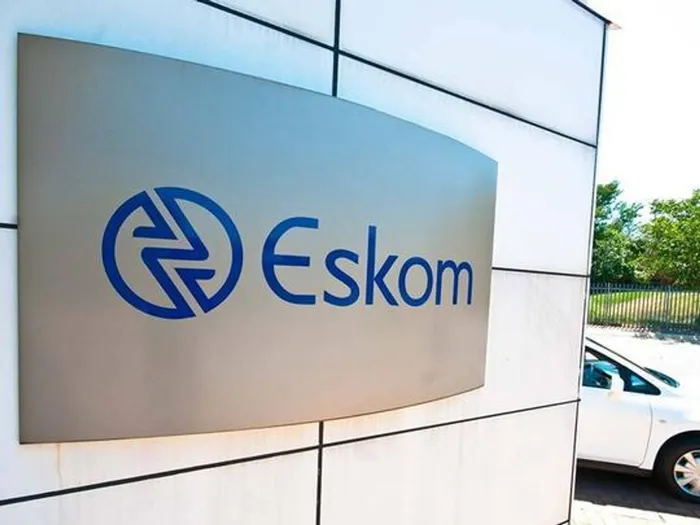Increasing municipal debt is a threat to Eskom’s viability
MID TERM BUDGET

Although Eskom reported an annual profit in 2024/25, for the first time in a decade, the improved financial performance remains at risk, partly due to escalating municipal debt arrears.
Image: File
Although Eskom reported an annual profit in 2024/25, for the first time in a decade, the improved financial performance remains at risk, partly due to escalating municipal debt arrears.
In 2023/24, government initiated a debt-relief arrangement to strengthen Eskom's balance sheet, enabling it to restructure and undertake essential investments and maintenance required to ensure a stable electricity supply.
As reported in the 2025 Budget Review, partly in response to Eskom's improved performance, the National Treasury revised the package, extending the support period to 2028/29 and reducing the total relief provided from R254 billion to R230bn. Legislation introduced in September 2025 provided for these measures.
The fiscal risk associated with Eskom has eased, although continued implementation of operational and financial reforms is critical to sustain progress and ensure lasting stability. This is underscored by the fact that in September 2025, Eskom electricity generation fell by 5.7% year-on-year (y/y) after a 3.1% y/y drop in August. Non-Eskom generation eased by a milder 2.6% y/y in September after a 0.4% y/y gain in August and as more non-Eskom generation comes online, so the divergence between Eskom generation growth and non-Eskom generation growth is likely to become larger.
The National Energy Regulator of South Africa (Nersa) registered 181 generation facilities during the third quarter (July to September) with a total capacity of 1 401 Megawatts (MW) and an estimated investment value of R30.8 billion. The generation facilities comprise 175 solar PV, four wind, one biogas and one battery energy storage system facilities. Gauteng had the majority of the solar PV facilities, at 66, even though it’s the smallest province in terms of area and not the best endowed in terms of solar radiation.
Since the inception of the registration regime in 2018, Nersa registered 2 236 generation facilities, with a total capacity of 16 040 MW and a total investment value of R328bn.
Statistics South Africa in its December 2024 electricity report noted that total South African electricity consumption grew by 3.3% in 2024 to 212 952 gigawatt-hours (GWh), but this was still 11.7% below the record 241 170 GWh used in 2017.
The Treasury noted that municipal debt to Eskom rose from R74.4bn at end-March 2024 to R94.8bn at end-December 2024. The Treasury said 20 out of 70 municipalities that applied were currently part of the municipal debt relief programme that allowed some debt write-off provided the municipalities kept up-to-date with current obligations to Eskom and instituted programmes such as smart meters, so that municipal collection for electricity usage improved.
Treasury said the evolution of the electricity supply industry and the connection of large-scale renewable and distributed energy will require Eskom’s company’s transmission and distribution infrastructure to be significantly strengthened and expanded. This is aligned with the requirements contained in the transmission and distribution network development plans.
It noted that expenditure in the transmission division accounts for 28.3% of total spending, increasing at an average annual rate of 16.5%, from R87.5bn in 2024/25 to R138.3bn in 2027/28, due to the execution of the transmission development plan for grid expansion.
Spending on distribution accounts for 10.7% of Eskom’s budget over the period ahead. The Department of Electricity and Energy is preparing to issue a request for proposals for a pilot independent transmission project in November 2025. This will invite the private sector to assist the National Transmission Company in expanding transmission lines.
In October, the cabinet approved the Integrated Resources Plan (IRP) 2025. Overall, the IRP 2025 envisages the introduction of 105 000 MW of new generation capacity by 2039, including: 34 000 MW of onshore wind; 25 000 MW of utility scale solar PV;16 000 MW of distributed generation, mostly in the form of behind-the-meter solar PV; 8 500 MW of storage, mainly in the form of battery energy storage systems; 16 000 MW of Gas to Power (GtP); and 5 200 MW of nuclear, which could include small modular reactors (SMRs) should the technology be proved commercially over the period.
The Minster of Electricity and Energy Kgosientsho Ramokgopa said the IRP 2025 had a cumulative net present value cost of R2.2 trillion. He said the two biggest risks were lack of skills and a lack of industrial capacity.